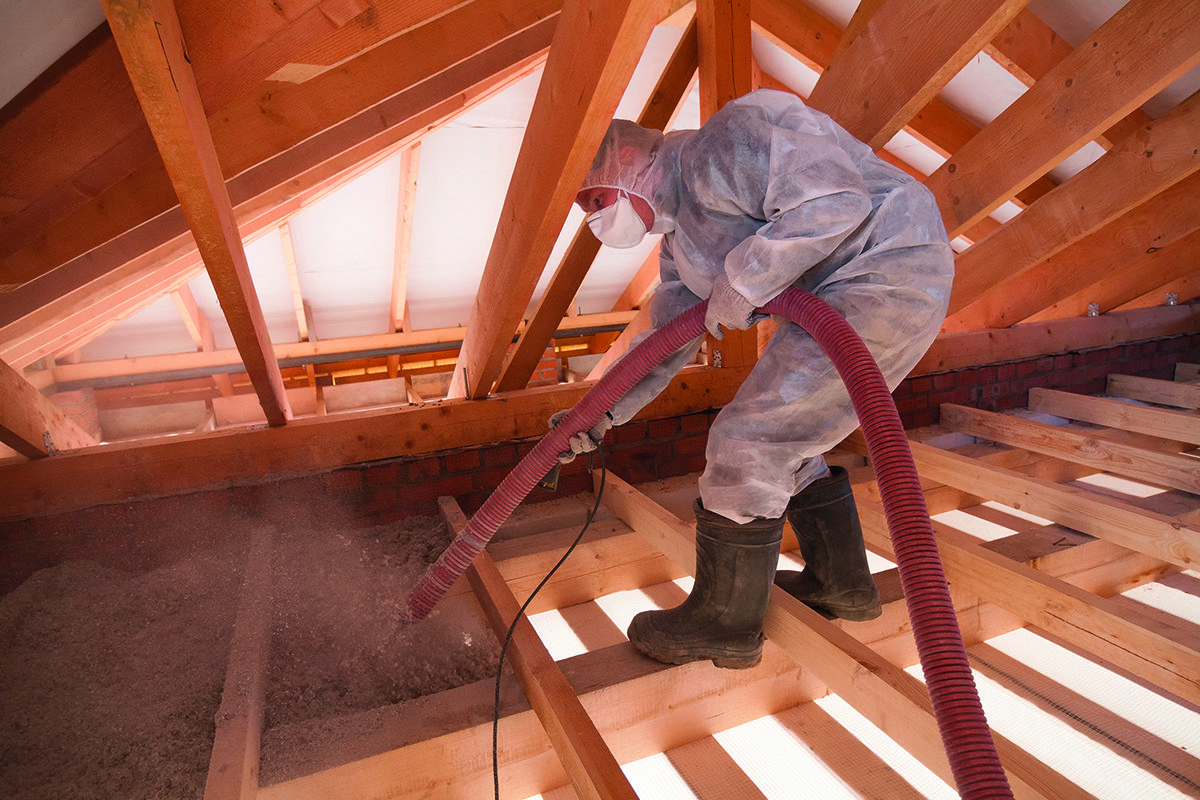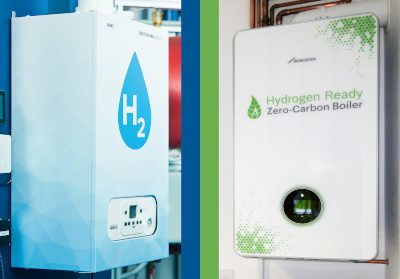
The UK has long lagged behind its European neighbours in encouraging the uptake of low-carbon heating, but the long-awaited Heat and Buildings strategy, published on 19 October, suggests a new level of ambition, with household funding for heat pumps being a standout measure. Will it do the trick? Envirotec reports.
Accounting for over a fifth of the UK’s carbon budget, heat is clearly a sector where cutting carbon will make a big impact, and where there is no time to waste. Roughly two thirds of UK homes are currently on the bottom tier of energy efficiency with Energy Performance Certificate (EPC) ratings of D or below. Any attempt at gaining traction on this long-standing problem has always relied on making difficult trade-offs, and striking a sensitive balance between incentivising decarbonization, on the one hand, and protecting families from immediate energy poverty, on the other.
This is the first such strategy to appear since 2013, and the repeated delays presaging its appearance possibly owe something to the topic’s sensitive nature.
The strategy attempts to present the first pathway to net zero emissions heating, and incentivization certainly features prominently, headlined by a £3.9 billion commitment to support decarbonizing heat and buildings. This includes a £450 million (over three years) Boiler Upgrade Scheme, which will be issued as grants of £5000-£6000 per household “to help overcome the current differential between heat pumps and boilers”, which will be available from April 2022.
Funding support is also forthcoming for district heating, via a £338 million investment in the Heat Network Transformation Programme set to take place between 2022 and 2025. Other support packages include the £150 million Home Upgrade Grant, which is intended to assist emissions reductions with households not currently on the gas grid.
Some observers were quick to point out that £5000 is a few notes short of a heat pump in today’s world, or about half the current cost, according to Energy and Utilities Alliance (EUA) CEO Mike Foster, who described it as “a middle-class bung for people who were probably going to fit a heat pump anyway.”
“For the same amount of money, £150 million per year,” he said, “half a million homes could have loft insulation fitted, saving each household £135 a year, and removing 290,000 tonnes of carbon emissions each year.”
“Instead, removing 45,000 gas boilers, replacing them with the subsidised heat pumps will remove only 71,000 tonnes of carbon each year. This is hardly the COP figure the Prime Minister wants to read.”
The plan also mentions a 2028 minimum target of installing 600,000 heat pumps per year. While the £5000 grant subsidises only 30,000 heat pumps per year, in Foster’s estimation, it was tempting to see this as a shortfall, but the plan counts on the price falling by 25% – 50% as the market expands.
The document specified the support applies to hydronic heat pumps (air-to-water or ground-to-water), because these are able to supply hot water, and therefore can be used to completely decarbonize a property.
The document also signals an intended phase-out of the installation of new gas boilers from 2035, “once costs of low-carbon alternatives have come down”, and the Heat Pump Association felt this to be “a major milestone for the low carbon heating market”. The government said it will also be publishing a consultation on ending new connections to the gas grid for new-build domestic properties in England by 2025. (p154)
Worcester Bosch felt the lack of decisive legislation, and an outright ban, was responsible for “confusion among installers and homeowners”, and others seemed bemused that there would be no obligation on households to replace their gas boilers until 2035.
Ramboll’s Guy Milligan felt there was confusion even in the name of the scheme, which should refer to boiler “replacement” rather than “upgrade”. “This may be intended to soften the introduction for home-owners, but will only serve to make it more complex further down the line.”
Foster also seemed to believe hydrogen-ready boiler installations would likely exceed 600,000 by 2028, given a chance, and this was a choice that should be available to consumers (but more on hydrogen later).
The heat is on?
Speaking on behalf of the Centre for Sustainable Energy, Ian Preston said it was “good to see low carbon technologies like heat pumps becoming mainstream, but the major challenge will be ensuring work is done first to ensure they work effectively and actually deliver low carbon and lower energy bills.
Some commentators observed that proper installation is key. Heat pumps are designed to deliver a steady quantity of heat throughout the day, rather than providing the quick blast of heat that can be expected from switching on a gas boiler. But they are popular in Scandinavian countries that are much colder than the UK. Still, the strategy acknowledged that “work needs to be done to build UK supply chains”.
Preson noted: “We need joined-up solutions to organise supply chains around green housing retrofit and low carbon heating installation, alongside support and independent advice for homeowners to make these changes.”
Some homes might have to be adapted to accommodate a heat pump, with measures such as resizing radiators and making space for hot water cylinders, as Worcestor Bosch pointed out, and these were all factors seemingly not considered in the strategy. The grant might help cover the cost of a heat pump, he said, “but there will still be costly investment required from homeowners in existing properties.”

Insulation first?
And it makes little sense to proceed with installing a potentially more expensive energy source when the basics of energy efficiency aren’t yet in place. As Ramboll’s Milligan said: “Heat pumps operate most efficiently when a building has a high energy performance, but most UK buildings fall well below the standard required, so homeowners will also need to spend on measures such as double or triple glazed windows, improved wall and roof insulation and larger heat emitters like underfloor heating.”
“Without this the heat pump will require a higher level of electrical input that simply means higher energy bills, and electricity has recently been three times the price of gas.”
London-based “climate change charity” Ashden noted: “After several false starts, government must set out long-term policy to encourage home insulation.”
Similarly, Caroline Jones of Greenpeace UK felt the strategy “must be delivered with a fully funded, nationwide programme to insulate our homes at a scale and speed that the government hasn’t fully grasped.”
Measures to lighten electricity bills wouldn’t go amiss either, and Ramboll’s Guy Milligan commented: “If this strategy is to succeed then alongside encouraging heat pump adoption Ministers must commit to reducing the price of electricity by shifting levies away from electricity to gas.”
Accessing the know-how
Expertise is clearly a major ingredient in the anticipated transition, but the strategy seemed light on support. Preston said his own experience with a previous, failed government scheme, the Green Homes Grant, was that “people need support and guidance through the process of low carbon home improvements.”
The earlier scheme also faced a big challenge with “finding contractors who were able to do the necessary work.” He noted that there is currently no funding available for impartial support agencies like his own.
Ashden observed that there are roughly 1,000 accredited heat pump installers in the UK, compared to 96,000 gas engineers, and only a small fraction of the UK’s builders are accredited to retrofit homes.
“Without a major skills boost, it would take centuries, not decades, to change the way we heat our homes.”
“An ambitious retrofit programme could create hundreds of thousands of jobs for skilled tradespeople across the country – carpenters, plasterers and electricians.”
Ashden also believed we will need a workforce of 36,000 retrofit coordinators to ensure insulation work is carried out to rigorous quality standards and avoid Grenfell-style disasters. At present, we have just 2% of the number needed.
Harriet Lamb, CEO of Ashden, said: “We have recently witnessed the impact of skills shortages on the haulage industry and the resulting fuel crisis.
“The installer skills gap is also a key blockage that we were expecting the Heat and Buildings Strategy to clear. There is a massive gap between the UK’s current capacity and the sheer volume of work needed to retrofit homes, install heat pumps and achieve zero carbon by 2050.”
The strategy mentions the Futureproof Essentials training, developed by the Green Register, and Preston described it as “essential for construction professionals who need to develop the skills needed to provide high quality retrofit services.” For its part, the Heat Pump Association was keen to flag its own recently launched training course for heat pump installers, “with the capacity to train up to 40,000 per year.”
The emphasis of the strategy is clearly towards heat pumps and district heating becoming the new standard for residential heating, but other approaches are being supported and assessed (see “Technology menu”, opposite).
Despite its obvious gaps and limitations, there seemed general relief at the appearance of a roadmap for the decarbonization of heat, which, as Baxi Heating’s Karen Boswell said, “the industry can and must support”. Only 60k heat pumps were installed in the UK last year so a tenfold increase by 2028 will clearly require a major ramp-up of retrofit and new-build installation.
[side panel ]
Technology menu

Heat pumps are one of five low-carbon heating technologies discussed in the strategy document, the others being: heat networks (i.e., district heating), hydrogen, hybrid heat pumps, and bioenergy.
On heat networks, the strategy is providing capital support through the Heat Networks Investment Project and Green Heat Network Fund. The document also said: “Through our transformation programme we will develop regulations to drive decarbonisation, improve consumer protection and performance of legacy networks, grow supply chains and upskill the workforce.”
On hydrogen, the document says the government is “looking to consult on mandating hydrogen-ready boilers,” but a seeming shortfall of action didn’t go unnoticed by industry observers.
Worcester Bosch lamented the omission of hydrogen-ready boilers in the boiler upgrade funding, since it is a technology “already successfully trialled” and which “could be a strong alternative to fossil fuel boilers on the market today”.
Writing in The Conversation, Heriot Watt University’s Ran Boydell seemed to discern a throttling of ambition on hydrogen. Strategic decisions on the role of hydrogen in heating buildings won’t be made until 2026, said the document. “But by then,” he writes, “other technologies will be so embedded in the market that hydrogen simply won’t fly.” He also noted the BBC’s Roger Harrabin’s observation on the day the strategy was released, drawing on the government’s Net Zero Strategy announcement of the same day, that industrial applications will likely have first dibs on any available hydrogen, so there may not be much left over to heat homes and buildings.
The strategy acknowledges that hybrid schemes, combining a heat pump with a combustion boiler (using fossil fuels or low-carbon alternatives), could play “a transitional role in the 2020s and 2030s” but it “currently remains too early to rule hybrid systems in or out of the 2050 energy mix”. More data is being collected towards this end, through initiatives like the Electrification of Heat Demonstration Project.
Bioenergy has a part to play too, though the document notes the CCC’s advice to limit its use for heating to biomethane produced by AD, or as an element within a hybrid scheme for off-gas-grid properties, or to local CHP or small-scale district heating systems.






